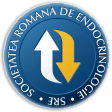
- Login
- Register
- Home/Current Issue
- About the journal
- Editorial board
- Online submission
- Instructions for authors
- Subscriptions
- Foundation Acta Endocrinologica
- Archive
- Contact
 Romanian Academy
Romanian Academy
 The Publishing House of the Romanian Academy
The Publishing House of the Romanian Academy

ACTA ENDOCRINOLOGICA (BUC)
The International Journal of Romanian Society of Endocrinology / Registered in 1938in Web of Science Master Journal List
Acta Endocrinologica(Bucharest) is live in PubMed Central
Journal Impact Factor - click here.

-
Endocrine Care
Yilmaz N, Tazegul G, Sari R, Avsar E, Altunbas H, Balci MK
Effectiveness of Unilateral Adrenalectomy in Bilateral Adrenal Incidentaloma Patients with Subclinical HypercortisolemiaActa Endo (Buc) 2021 17(4): 479-485 doi: 10.4183/aeb.2021.479
AbstractObjective. Unilateral adrenalectomy (UA) is an alternative for treatment in bilateral adrenal incidentaloma (AI) to avoid possible long-term risks of bilateral adrenalectomy. In this study, we aimed to evaluate the effectiveness of UA in bilateral AI patients with subclinical hypercortisolemia (SH). Method. A total of 35 patients were included in this study. The patients were divided into two groups; those who underwent UA (n=27) and patients without adrenalectomy (PWA) (n=8). Hormone tests related to cortisol mechanism were reviewed to analyze results at the time of diagnosis compared to the latest available results to figure out any changes in cortisol mechanism and determine whether SH has recovered or not. Results. Median age of PWA group were higher compared to UA group (p=0.03). Median duration of followup in groups were similar (p=0.3). In the PWA group, none of the patients recovered from hypercortisolemia during their follow-up. In UA group 92.6% of the patients went into remission, whereas during follow-up 3.3% had recurred and another 3.3% were found to have post-adrenalectomy persistent SH. Patients in UA group had lower final cortisol level following dexamethasone suppression (p=0.003) and higher final adrenocorticotrophic hormone (ACTH) levels (p=0.001) than patients in PWA group. In UA group, final basal cortisol level (p=0.009) and final cortisol level after 1 mg dexamethasone suppression test (DST) (p=0.004) were lower than corresponding levels at the time of diagnosis. Discussion. Our study demonstrates unilateral adrenalectomy targeting the side with the larger lesion is an effective approach to reduce excess cortisol levels in bilateral AI patients with SH. -
Case Report
Altin O, Sari R
Pericardial Type 1 Parathyromatosis: A Very Rare Cause of Primary HyperparathyroidismActa Endo (Buc) 2020 16(4): 505-507 doi: 10.4183/aeb.2020.505
AbstractBackground. Parathyromatosis is a rare clinical condition where hyperfunctioning parathyroid tissue is scattered in the neck and the mediastinum. It is difficult to diagnose and manage due to recurrent or persistent hyperparathyroidism. Case report. We present a peculiar case of hyperparathyroidism as the parathyroid tissue was in unusual location. Scintigraphy done revealed a lesion suspicious for ectopic parathyroid tissue in the retrosternum in a 58 years old female patient with primary hyperparathyroidism. No pathologic lesions were found on neck exploration, subsequently, sternotomy was performed and suspicious lesion removed but microscopic evaluation of the frozen section found no parathyroid tissue in the resected specimen. A decision to perform thymectomy and total resection of pericardial fatty tissue was made. Final histopathology revealed parathyromatosis and confirmed the first case of pericardial type 1 parathyromatosis. Conclusion. Long-term remission is rare in these patients, sometimes needing medical treatment and multiple surgeries. In this patient, there was no recurrence during the four years follow-up. In patients with no history of neck surgery, primary parathyromatosis should be considered in the differential diagnosis of hyperparathyroidism. -
Endocrine Care
Mesci B, Oguz A, Coksert Kilic D, Celik S, Sahin G, Tekin M, Sariisik A, Koroglu G, Takir M, Sagun G, Tamer G
Triple oral antidiabetic or metformin-basal insulin combination: testing two diffrent approches of consensus algorithm in adjusting antidiabetic therapy. An open-label, randomized studyActa Endo (Buc) 2012 8(4): 587-594 doi: 10.4183/aeb.2012.587
AbstractObjective. The aim of this study was to compare the clinical effects of a triple oral antidiabetic combination versus basal insulin and metformin combination treatment in patients with poorly controlled type 2 diabetes.\r\nMethods. Eighty patients with type 2 diabetes, who were treated by metformin and sulphonylurea combination, and had\r\nHbA1c values between 7.5 and 10 % (58 and 86 mmol/L), were randomized into two groups. The first group was given triple oral antidiabetic therapy (pioglitazone, metformin, and sulphonylurea) and the second group was given metformin and a bedtime basal insulin (insulin detemir) combination for 12 weeks. Metabolic parameters were evaluated.\r\nResults. The mean fasting plasma glucose and HbA1c levels decreased in both groups. The decrease in HbA1c was slightly\r\nhigher in triple oral antidiabetic group (p=0.046). The patients in triple oral combination group gained 0.2 kg (p=0.881) and those in the metformin-insulin detemir combination group lost 1.7 kg (p=0.001) in 12 weeks (p=0.29 between groups). The frequency of hypoglycemia was higher in\r\ntriple oral antidiabetic group (11 vs. 2 episodes, respectively).\r\nConclusion. Both sulphonyureametformin-pioglitazone and insulin detemir-metformin therapies provided significant improvements in glycemic control. However, sulphonylurea,\r\npioglitazone and metformin combination led to more frequent hypoglycemic events, and weight management seemed in favor of insulin detemir-metformin combination.